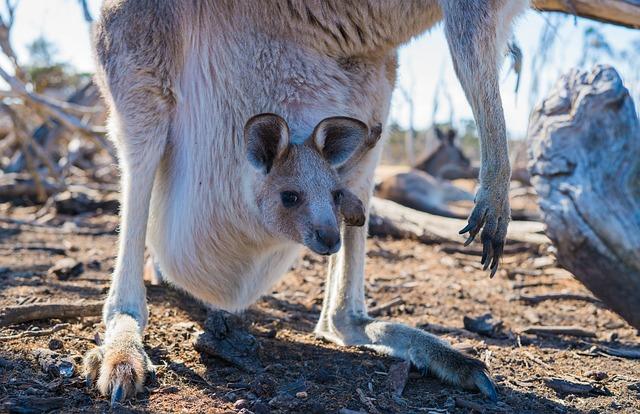In the high-stakes world of NASCAR, where split-second decisions can make or break a race, safety on the track remains a paramount concern. Recent comments from reigning champion Joey Logano have illuminated a pressing issue: the narrowness of the pit road at Homestead-Miami Speedway. Following a tense race weekend, Logano voiced his concerns, stating, “We are flirting with disaster,” as he called for immediate action to widen the pit lane. With the potential for accidents increasing amid such tight conditions, Logano’s remarks have sparked a broader conversation about safety protocols and modifications needed to protect drivers and teams. This article delves into Logano’s concerns, the implications for the upcoming races, and what changes could be on the horizon for one of NASCAR’s pivotal tracks.
Joey Logano Voices Concerns Over Safety Risks at Homestead Pit Road
In a candid assessment of safety conditions during racing events, Joey Logano has vocalized serious concerns regarding the current state of the pit road at Homestead-Miami Speedway. The reigning champion highlighted the inherent dangers posed by the narrow confines of the pit area, stating that the risk of accidents is alarmingly high. Logano emphasized that the situation is exacerbated during race weekends when the traffic is thick, increasing the likelihood of a catastrophic incident. He remarked, “We are flirting with disaster,” pointing to several past close calls that have raised eyebrows among drivers and teams.
Logano’s solution is straightforward yet significant: widening the pit road to ensure safer operations during pit stops. He laid out a few key reasons why this change is essential, including:
- Enhanced maneuverability for crews.
- Reduced risk of collisions during high-pressure scenarios.
- improved visibility for drivers exiting their stalls.
To back his claims, Logano called for an urgent review of the current pit road configurations, urging NASCAR officials to prioritize driver safety and potentially avert what could be a tragic accident in the future. As he put it, “We need to ensure that everyone goes home safe after the race.”
Analyzing the Impact of Limited Pit Road width on Race Strategy and Performance
The narrow confines of pit road at homestead have sparked a dilemma for teams and drivers alike as they gear up for upcoming races. Joey Logano has voiced concerns about the current width, highlighting how it restricts maneuverability and can lead to chaotic pit stops, which are crucial for maintaining race position. The limited space forces teams to rush their pit crews, increasing the risk of accidents and mistakes. Drivers are not only battling for track position but also strategic positioning within the pit box. As each millisecond counts, the potential for a costly error grows substantially within these tight parameters.
To better understand the role of pit road width on race strategy, consider the following points:
- Traffic Management: A narrower pit road can lead to bottlenecks that hinder strategic entry and exit.
- Risk Assessment: Teams must weigh the risks of aggressive pit strategies versus the safety and timing implications of a restricted space.
- Performance impact: estimated time losses due to traffic jams can significantly affect overall race performance and positions.
| Width (Feet) | Typical Impact | Consequences |
|---|---|---|
| 12 | Severe congestion | Increased pit stop duration |
| 15 | Moderate issues | Potential accidents |
| 18 | Smoother operations | Improved team efficiency |
Recommendations for Enhancing Pit Lane Safety and Efficiency at Homestead
To improve safety and efficiency during pit stops at Homestead, several modifications are necessary that prioritize both the drivers’ welfare and the fluidity of pit road operations. Key recommendations include:
- Wider Pit lane: Expanding the width of the pit lane would allow for safe maneuvering of cars during stops, reducing the risk of collisions between teams and cars entering or exiting the pits.
- clear Signage and Markings: Implementing clearer signs and enhanced ground markings can help teams better navigate the pit road, ensuring that crucial information is easily visible and understood, especially during high-pressure situations.
- Dedicated Safety Zones: Establishing designated safety zones for team personnel during pit stops can minimize the chances of personnel being in harm’s way, particularly during chaotic pit sequences.
- Enhanced Communication Protocols: Strengthening communication measures between drivers and their crew can lead to seamless pit operations, helping teams to react quickly and adjust their strategies as needed.
Alongside these physical changes, introducing regular training sessions for crew members on safety best practices could foster a culture of safety and efficiency. Suggested initiatives may include:
- Simulation Drills: Conducting pit stop drills that simulate various race scenarios to enhance crew readiness and response times.
- Incorporating Technology: Utilizing real-time data and video analysis tools can provide insights into pit stop performance,allowing teams to identify weaknesses and improve procedures.
- Collaboration with Safety Experts: Engaging with safety specialists to assess current practices and recommend tailored strategies for homestead can lead to innovative solutions that directly address existing challenges.
| Recommendation | Expected outcome |
|---|---|
| Wider Pit Lane | Reduced collision risk |
| Clear Signage | Improved team navigation |
| Dedicated Safety Zones | Protected team personnel |
| Enhanced protocols | Seamless operations |
NASCAR’s Response: Will Changes Follow Logano’s Call for Wider Pit Road?
Following Joey Logano’s urgent plea for a wider pit road at Homestead-Miami Speedway, NASCAR officials are compelled to revisit safety protocols that govern pit stop procedures. Several drivers have echoed Logano’s sentiment, emphasizing that the narrowness of the current setup has the potential to escalate risks, particularly during high-pressure races. The call for change comes after multiple close calls in recent seasons, where pit crew members and drivers alike have narrowly avoided serious accidents.NASCAR’s leadership has acknowledged the need for a thorough assessment of pit road dimensions, considering both logistical constraints and the urgency of ensuring crew safety.
To facilitate discussions around this critical issue, NASCAR is actively engaging with team owners, drivers, and pit crews. potential areas of focus include:
- Adjusting pit road width: Exploring options to widen pit lanes without compromising track integrity.
- Enhanced safety barriers: Evaluating the installation of additional protective measures for pit crews and equipment.
- Revising protocols: Implementing stricter guidelines for cars entering and exiting the pits to prevent collisions.
NASCAR’s response may also include a detailed impact study of proposed modifications, assessing how changes could affect overall race dynamics. Stakeholder feedback is crucial as the series navigates this conversation, and crews are eager for concrete actions to address safety concerns raised by Logano and other veterans in the sport.
Final Thoughts
Joey Logano’s call for widening the pit road at Homestead-Miami Speedway underscores the growing concerns regarding safety and competitiveness in the sport. His candid remarks signal an urgent need for NASCAR officials to consider enhancements that could prevent accidents and improve the experience for drivers and teams alike.as the racing season progresses, it will be crucial for stakeholders to engage in discussions and explore solutions to this pressing issue. With the potential for disaster looming, now is the time for action to ensure the safety of all participants on race day.The future of the sport depends on addressing these concerns head-on, fostering a safer environment for everyone involved in motorsports.









